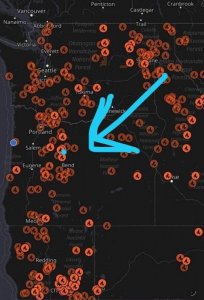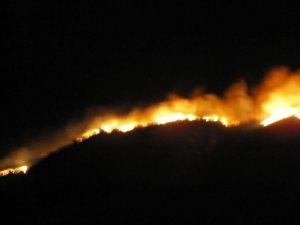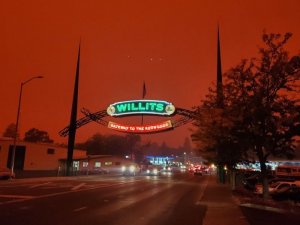In CA the majority of wildfires this summer were caused by dry lightning storms; e.g., no measurable rain, but thunder and lightning.
In a single day - Aug 17, 2020 - CA saw 9,000 lightning strikes. Only one major wildfire is confirmed to be caused by human error so far.
Although in total for 2020 there have been 7560 fire incidents, this includes smaller brush/grass fires that are handled by local fire departments. Of this total, there are 10 major wildfires being fought by CalFire, the state's wildfire force. These are the ones national media highlight.
So far a total of 8 people have died as of Sept 8th, although thousands of structures, almost all in the WUI, have burned.
=====
Per a WashPost article, "....the five-year average for the month of August is 30,089 cloud-to-ground strokes across the state. Yet for the Aug. 15 to 19 period for 2020, there were
20,203 cloud-to-ground strokes statewide, meaning that more than half the month’s typical lightning total occurred in just four days.
"...According to CalFire, since Aug. 15 there have been more than 700 new wildfire starts in California, which together have burned more than 1.32 million acres. This is larger than the state of Delaware. "
Since WashPost is subscriber only, here's a link to a free NBC News article (back from Aug 23, 20202) that talks about the dry lightning danger:
Northern California braces for more dry lightning
=====
Note that this is the
beginning of our fire season. We get our rains normally in late Oct/early November, but in bad drought years they may not arrive until Dec/Jan, which adds to fire danger.
I live in the urban San Francisco Bay Area, in the north-eastern part. Relatively low fire danger. Air Quality Index (AQI) has only reached Unhealthy (for all) levels briefly - maybe once so far, and only for a day. It has reached Unhealthy (for sensitive groups) a number of times, however. Over the last week it has been Moderate, with the smell of smoke only in some areas, depending on the wind direction.
People in the San Jose/Gilroy area are suffering more from high particulate index as they are much closer to the CZU fire, the Monterey/Santa Cruz complex (what multiple wildfires in a grouped area are called, even if they have not merged into one fire yet) wildfire.
The heat is easing in Northern CA, but wind and fire danger will ramp up briefly tonight (Tues) thru Wed a.m. We have not smelled smoke for over a week, but as of 2p today it began to make itself evident again - still faint, but noticeable.
The three major wildfires around Northern CA are being contained and all evacuees are now allowed back in to assess any damages.
Unfortunately, the heat and larger areas of WUI (wildland urban interface) suburbs built in fire-prone areas of Southern CA means the danger to people and structures is substantially greater than in less-populated Northern CA.





